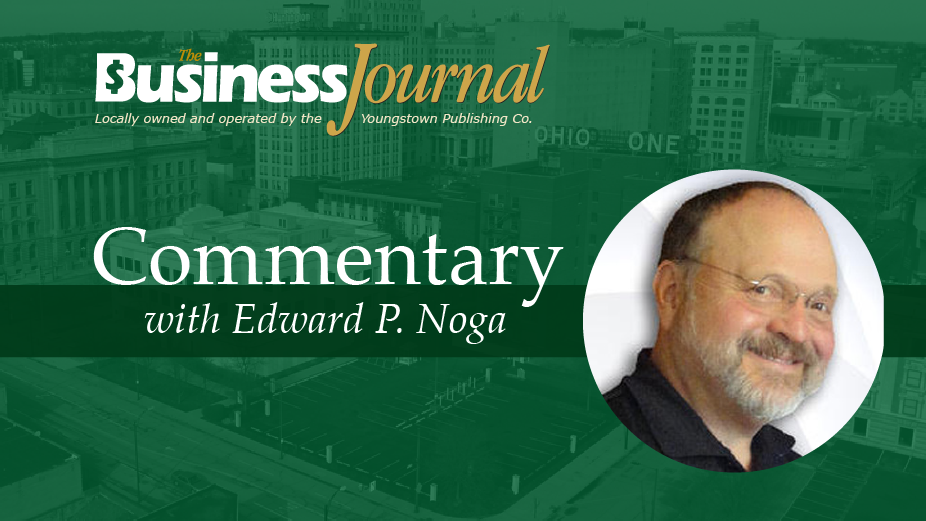By Edward Noga
YOUNGSTOWN, Ohio – Even in the early days of the pandemic – when the lockdowns were severe, curfews were imposed and only the most essential travel was allowed – when we got inside an automobile, we were on the road.
Yes, the side streets, major thoroughfares and highways were part of our venturing out. As things have seemingly changed for the better, we increasingly are on concrete and asphalt (and sometimes gravel or dirt) that takes us from Point A to Point B.
Knowing that our lives are filled with adjusted, changed and sometimes scuttled plans, I would like to share a brief meander back in time.
In the early 1970s, the Lake-to-River Highway (state Route 11) was built. It linked portions of Columbiana, Mahoning, Trumbull and Ashtabula counties. At the time of its construction, there were hints that U.S. Steel Corp. was going to build a huge greenfield mill in Conneaut on Lake Erie.
This highway had the potential to bring workers, materials and supplies to this megasite for employment. It would link the four counties and provide easy, nonstop access north and south.
I am sure that there were many other transportation realities that warranted this expenditure. But I remember this particular roadway being called a real game-changer.
I am not an engineer. I do not own or work for a construction company. I am not a political leader in any of the jurisdictions that Route 11 crosses. I do know, however, that the seemingly underused Lake-to-River Highway is a great stretch of usually stress-free travel in part because the steel mill was never built in Conneaut.
Plans do change and during 2020, we learned that on every level.
Now let’s return to present-day realities. When we pull onto a roadway, we count on a safe and smooth surface to take us on our travels. Given our climate, we know that our pavement takes a real beating in winter.
We also know that our taxes are generally well used and community leaders generally do their best with the resources they have to keep our roadways in good shape. Regarding our location, I think the last four censuses (the jury is still out on the most recent) have reminded us that we live in a valley that we love as home but that continues to lose population overall.
Leaders at all levels have had to deal with this and probably will be again reminded when the new census figures are official.
With this in mind, sometimes I wonder what it means when we continue to build new roads. Almost all of us count on automobiles or taxis or vans or buses to move from here to there. With a declining population, which translates into a declining tax base and declining revenue, do we think enough of creative reuse of some of our established areas so that we don’t always have to build new roads?
Do we think of ways to grow by including (and perhaps repurposing) what we already have?
With fewer folks, more roads mean more chuckholes to fix, more repairs to make and more snow to remove. Seems like a tough, no-win, situation for local leaders. And in recent years, we have suffered through flooding that we know results in part from pavement covering more and more of our land. Drains can handle only so much.
Not too long ago, former Mayor Jay Williams suggested that Youngstown look at closing off or removing some roads where warranted. Naturally, this process would be tedious and would have to be sensitive to those living on the streets. A careful cataloging of homes and consideration of other factors could provide a basis for such a response.
I am sure that such discussions might be possible in large and small communities up and down Route 11 because plans change and new realities confront all of the region’s residents. It might be a thoughtful continuing dialogue in communities under the familiar title “We Don’t Need to Reinvent the Wheel.”
Knowing that 20% of the world’s freshwater is just a one-hour (or less) drive from the Mahoning Valley, planners are encouraging us to get ready for this part of the world to be more enticing for those moving here.
It’s doubtful that trainloads of people will be flocking here but our climate is better than those in many areas and our cost of living is about as affordable as it gets.
If we could add better roads to the mix, the Mahoning Valley would become a better home for all involved. For sure, there are no quick fixes for community issues. But we have some wonderfully creative minds here who need to be encouraged to continue taking as many of the bumps out of our everyday lives as possible.
Kudos to those who plan and work and lead us down the better roads of life.
